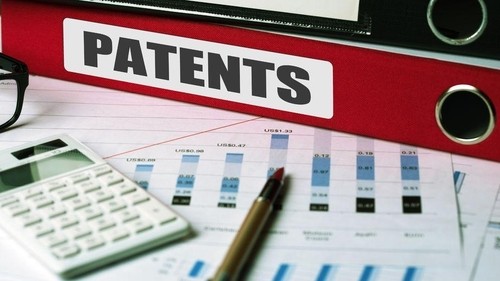What is a patent
A patent is a document that confirms the exclusive right of an inventor to the result of his creative work. How well he manages to dispose of this right depends on his entrepreneurial success.
First of all, every young scientist needs to clearly understand the difference between such concepts as “author of a patent” and “patent holder”. If you want to sell your patent, we recommend using ip brokerage firms like Patent @ KBLLP. This is the surest way to make a sale of your patent. The company also licenses patents. If you need more information on this subject, please contact us.
The author of a patent is an individual whose creative work creates objects of intellectual activity: inventions, utility models or industrial designs. If you succeed in patenting an invention, the exclusive right of authorship for the patent remains with you forever. The author of the patent automatically becomes the patent owner (he can retain this status or transfer it under certain conditions to another individual or legal entity).
A patent owner is a natural or legal person who owns the rights to an object of intellectual property. This status gives the right to use the invention at one’s own discretion, in particular, to monetize it by any available means. A patent can be sold – and receive a fixed fee for its use in the future. You can license – and receive royalties. Finally, you can contribute a patent to the authorized capital of a company (for this you need to estimate its value), which will be engaged in the production of goods or services according to its content.
It was a theory, but in practice, not all authors become patent holders. Even worse, not all scientists who have made inventions are assigned even just copyrights. A scientist who works in a science-intensive company where patents are “born” may not even be told that he is the author of the patent. It’s also good if they write it down in the “group of authors” – it happens that this does not happen either. In my experience (and the experience of my colleagues), this happens, unfortunately, in most cases, which is absolutely wrong.
And it’s right when a scientist is given a job assignment under an employment contract, according to which the inventor must develop something important and useful. And if the result of this work is patentable intellectual property, then, firstly, the scientist gets the right to be the author of the patent, and secondly, on certain conditions (to receive a fixed payment or agree on royalties) to transfer the right of the patent owner to a company or institute. The terms of cooperation should be agreed in advance within the framework of contractual relations either with the employer or with partners or institutions on the basis of which scientific activities are carried out.
How to register a patent
You can apply for a patent yourself or with the help of a patent attorney. The websites of Rospatent and FIPS have all the requirements for the application, recommendations, and a sample of filling in the fees.
For registration, you need to fill out an application for a patent, as well as pay a fee for consideration. The cost of a one-time fee varies from 10$ to several thousand dollars, depending on the object of patent law (utility model, invention or industrial design) and on the number of paragraphs in the description of the essence of the invention.
Before filing an application, you will have to “shovel” a significant amount of literature, patent data, and articles. This is necessary in order to describe the invention as accurately as possible in the style of “today there are technologies A, B and C, and we are doing D. Our technology is better than the existing ones in such and such”.
A patent is easy to do yourself if you already have experience. It takes me an average of 10 days to complete an application. If you do not know how to do this, then you should write your first patent together with a patent attorney. If you work with a patent attorney, it may take only two to three business days to complete an application. It will cost from 500$ to 1000$, depending on the region and the object of patent law.
On average, it takes 12 months for patents to review an application for inventions, and two months for utility models.
How to make a patent the basis of your business
You have a promising development, but no money, space, equipment, or well-established promotion and sales channels. I will tell you about how to get all this using the example of my own company Napoli.
At the Department of Chemical Technology and New Materials at State University, together with colleagues, developed a new technology for the production of polymeric nano- and ultra-thin fibers and later decided to write a manual describing this method. She became interested in a large manufacturer of modern dressings – the Biotech Pharma company, which saw the prospects of our scientific developments as part of its core business.
We patented the technology, and later, at the time of the creation and structuring of the business, our patent was valued at several tens of millions of dollars – this is how the Napoli company appeared, which now produces and sells bioresorbable wound dressings made of biopolymers.
It was the patent for the method of fiber production that formed the basis of the business – the assessment of its value determined the size of the share of scientists in the authorized capital. The partner (Biotechpharm) helped with product registration and promoted and sold the product through its own channels. Gradually, we adopted some of his competencies, created our own online store and launched sales in the pharmacy segment.
There are several approaches to estimating the value of a patent. You can look at how much a similar patent costs, how much was spent on the creation of the object of evaluation, and analyze the potential income that the copyright holder can receive from using his invention. Another option is to build on the contribution that partners make to the business being created.
What are the alternatives
Young scientists today may not have a lot of space, no big money, no big opportunities, but they have bright minds, original thoughts, cool inventions and enthusiasm. You need to use it, correctly draw up intellectual property and start your own business. Those who are not going to leave science can make money on their discoveries in three ways.
1) Receive a fixed payment or royalty
Suppose a group of scientists works for a company that produces new cosmetics. The company instructs (in the form of a job assignment) to develop the composition and production technology of a new product. For the work performed, scientists receive the rights of authorship for inventions. The employer, as a rule, leaves the exclusive rights of the patent owner to himself, and for this he offers the author a certain amount, which is prescribed in the copyright agreement. Subsequently, the company itself can launch the production of these products or sell a patent for a technology or product.
The remuneration to the author of a patent can be issued on different conditions: one of the options is a fixed cost (lump-sum payment). On the other hand, you can receive royalties – a percentage of the amount of sales or profits from a product or service created under a patent. This can only be done when production is put on stream. Also, in some cases, it is possible to agree on both a lump-sum payment and royalties at the same time.
In my opinion, royalty is the most winning model for both parties. A scientist realizes his ambitions and competencies, creating the highest quality product with market prospects, the company receives a high-quality profitable product or service in its portfolio.
In biotech, for example, royalties typically range from 1% to 5% of sales. I will give an example from my practice. The turnover for one product per year reaches 50 million dollars, the royalty, which was agreed upon by a team of authors of three people, is 2%. Another product accounts for 20 million dollars, the amount of royalties for two authors is 3%. Consider whether scientists can make money. You need to find on whose platform to embody your knowledge and skills, and move forward.
2) Sell the patent
Let’s say you alone or in a team of like-minded people have developed a cool product. You patented it and sold it to an interested buyer. That is, they just took it and earned it. This is a legal, simple and understandable mechanism. The simplest one that comes to mind, but I don’t know many people who have ever had such an opportunity.
3) Engage in “patent trolling”
There is also such a way. Anything can be patented. The exclusive right to a patent makes it possible to prevent others from using the invention without permission. Anyone who wants to enter the market will be forced to either buy out the patent or pay you royalties. However, for this scheme to work, you need to be able to guess in which direction this or that market is moving, and this is a great art.




